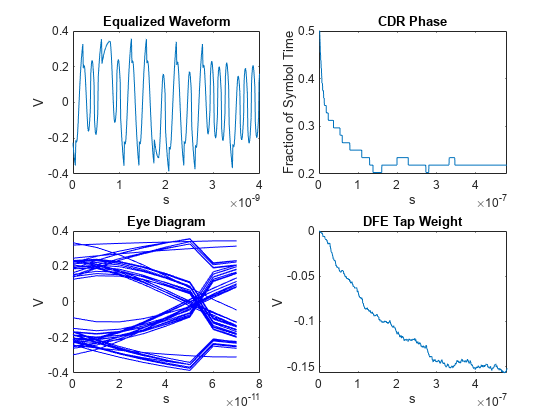serdes.DFE
Description
The serdes.DFE
System object™ modifies a baseband signal to minimize the ISI at the clock sampling times. The
decision feedback equalizer (DFE) samples data at each clock sample time and adjusts the
amplitude of the waveform with a correction voltage.
To modify the input signal using a DFE:
Create the
serdes.DFEobject and set its properties.Call the object with arguments, as if it were a function.
To learn more about how System objects work, see What Are System Objects?
Creation
Description
dfe = serdes.DFE
dfe = serdes.DFE(Name=Value)dfe =
serdes.DFE(Mode=1) returns a DFE object that applies the specified DFE tap
weights to the input waveform.
Properties
Object Functions
To use an object function, specify the
System object as the first input argument. For
example, to release system resources of a System object named obj, use
this syntax:
release(obj)
Examples
More About
Version History
Introduced in R2023a
See Also
serdes.CDR | serdes.DFECDR | DFECDR | CDR
